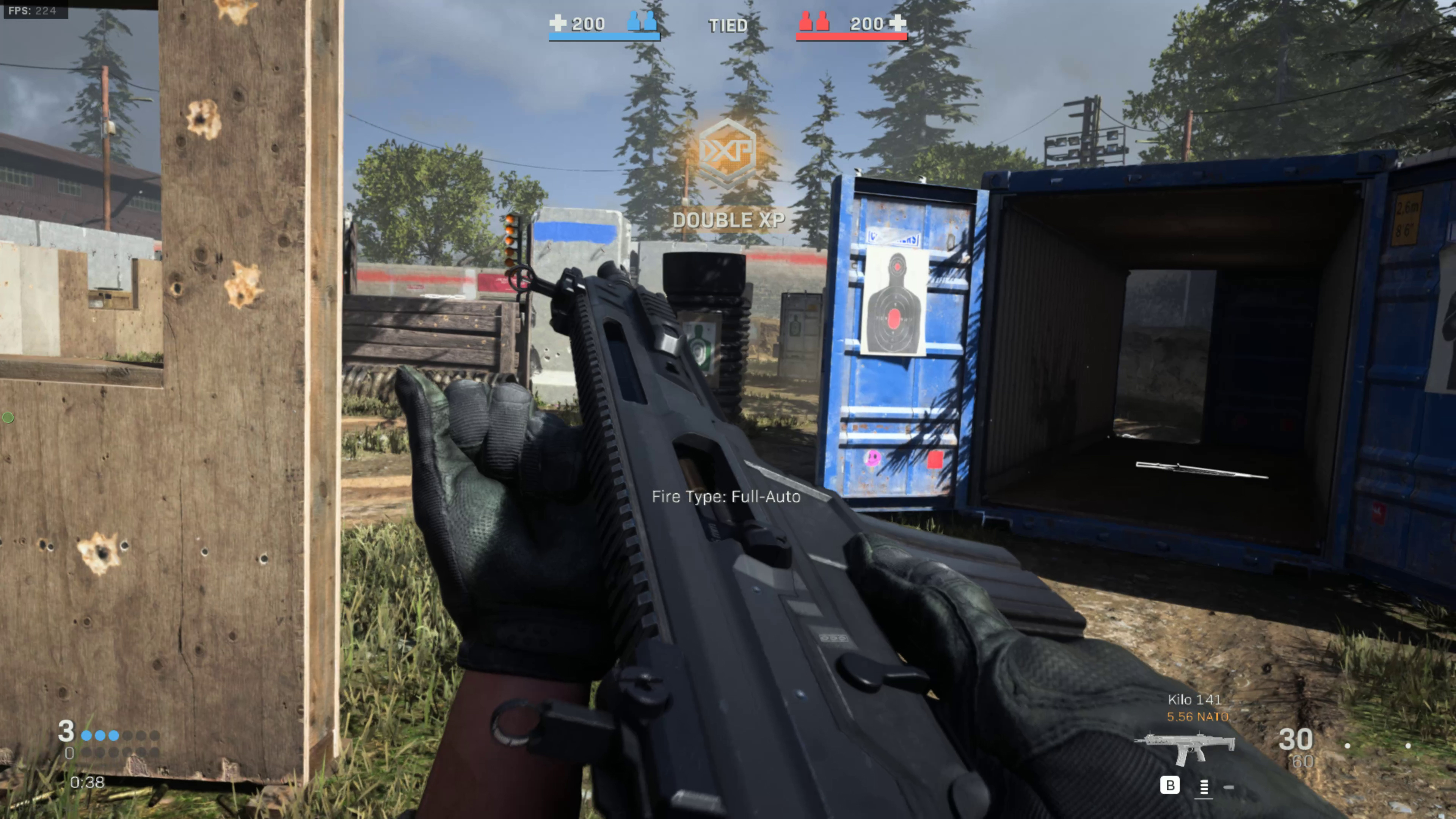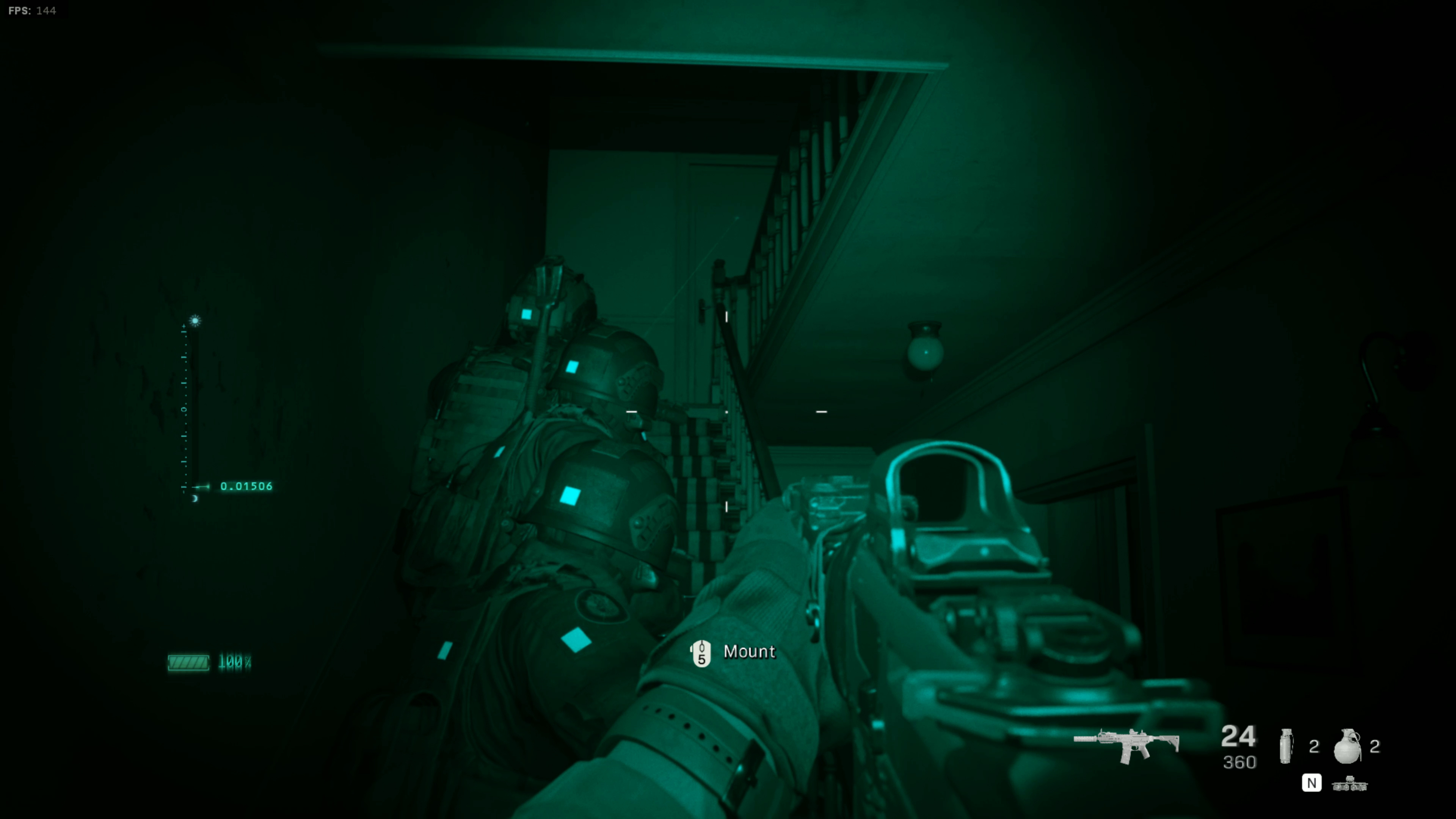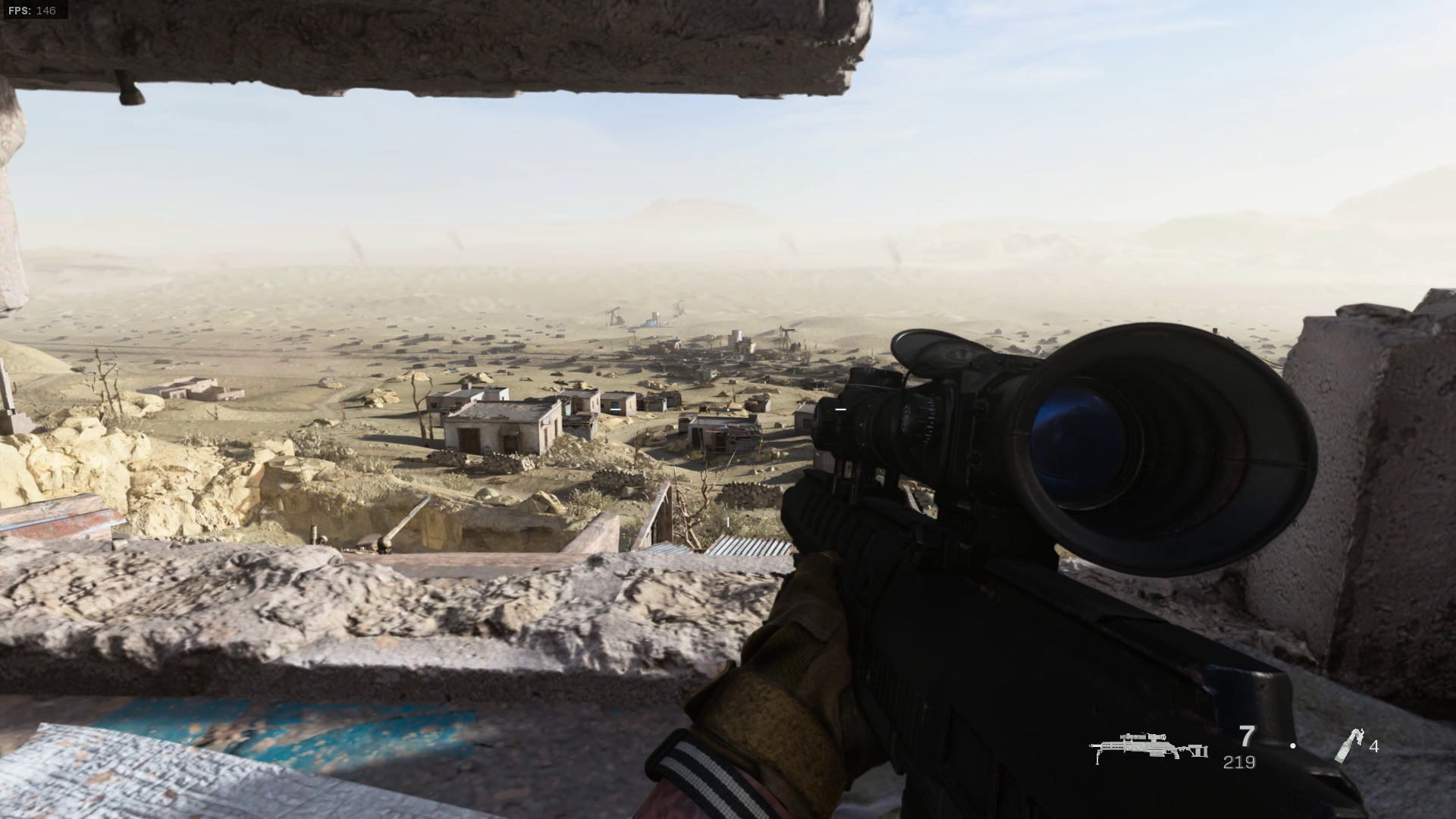What is it? A big-budget reboot of an extremely influential singleplayer and multiplayer FPS.
Expect to pay $60/£45
Developer: Infinity Ward
Publisher: Activision
Reviewed on: Nvidia RTX 2080, Intel I9-7900X, 32GB RAM
Multiplayer: Competitive up to 64 players
Link: Official site
Call of Duty: Modern Warfare has sold itself as a return to the setting that “started it all.” It’s a snappy marketing line that tugs the nostalgic strings of fans who remember the magic of 2007, and it’s not entirely misleading. The warfare is once again modern and, yes, Captain Price is still your likeable squad dad. Yet it’s Modern Warfare’s moments of unfamiliarity that impressed me—rebuilt weapon handling, ambitious new multiplayer modes, and characters that aren’t the cookie-cutter operatives we’ve seen in the last decade.
Modern Warfare is an evolution for the series, and it’s exciting. Unfortunately, this evolution is only half-realized in multiplayer. Here, the relics of 2007 clash with fresh ideas. Modern Warfare aspires to be grounded and tactical while giving you the power to pilot your own heavy gunship. For as far as Modern Warfare moves the needle, it still spends so much energy checking the same old boxes.
- CoD: Warzone download: how to get battle royale free
- CoD: MW Akimbo guns: the pistols you can use this perk with

Shellshock
It’s easy to forget about these complaints in the heat of a match, because Modern Warfare’s action is exceptional. Weapons explode with concussive energy and rattle with recoil until the magazine is spent. Reload animations bask in the moment with motion-captured flare that celebrates a kill and snaps back into place for the next fight.
Modern Warfare’s marquee modes still encourage the unintelligible carnage that cemented Call of Duty’s empire.
Facing the lethal end of Modern Warfare’s weapons is often petrifying. Taking a hit doesn’t just flinch your camera and spray blood jelly on-screen. Bullet impacts are loud, disorienting thuds—it feels like my chest is caved in. Near-miss bullets slice through oxygen with the deafening echoes of a military sim. The classic hit marker ‘thwoops’ are now blunt strikes that form a supersonic flurry of blows, closing on the intoxicating coin flip ‘ding’ that promises I’ve won the firefight. The violent hum of a helicopter’s minigun drowns out my own weapons, proudly declaring that it’s top dog. Its busy soundscapes are facsimiles of real battlefields with drama cranked up to 11.
I can smell the piles of Activision money burned to make Modern Warfare look, sound, and animate this good. And it was worth it, because arcadey shooting has never felt more forceful.
Despite an aesthetic turn toward reality, Modern Warfare’s marquee modes still encourage the unintelligible carnage that cemented Call of Duty’s empire. Team Deathmatch and other core modes remain cyclical meat grinders of kill-die-respawn-kill where the only skill check is the first to click on a head. Oh, and whoever scores the murder-est killstreak—those are back, too.

Modes for all
Modern Warfare’s Spec Ops missions trade bite-sized co-op episodes for operations more akin to Destiny strikes. The mode has its own custom, wide-open maps with segmented areas and character classes that support your squad in different ways.
It’s a neat conceit designed to be heavily replayable, but the version I played at the review event was in rough shape. Enemies constantly spawned behind us in areas we’d already cleared, we never had enough ammo, and the balance felt totally off. Almost no groups could finish a single mission (mine included). We didn’t have much fun, but it’s easy to see where it can be improved.
I hate killstreaks. They represent the worst of CoD’s outdated traditions. In my years away from the series, I haven’t missed getting carpet bombed by a $90 million jet while minding my own business. Killstreaks shatter any semblance of balance and hand more power to players already topping the scoreboard. I can’t help but imagine those enemy pilots blissfully chuckling at us helpless ants as we flee from the burn of their magnifying glass. But when the roles reverse, the pride of a long killstreak is devalued by the ridiculousness of my power trip. I got 30 kills, yay, but really I got 20. The rest are empty ant kills.
The superiority of gunships and predator missiles also cheapen Modern Warfare’s new Field Upgrades—small-scale tools and abilities that add a bit of strategy to a standard loadout. I enjoy gadgets like the Trophy System, which zaps away enemy grenades mid-air, and the Recon Drone, which paints targets red for the whole team to see. Field Upgrades allow for tiny moments of real teamwork, a feat for CoD’s typically selfish playstyle. But when a new UAV or Predator Missile is thrown into the mix every 30 seconds, flying a dinky little drone or blocking a few grenades is comparatively inconsequential.
Gunfight, Modern Warfare’s new 2v2 round-based elimination mode, is my bastion away from that chaos. Gunfight ditches killstreaks and ratchets up intensity with 40-second rounds and no health regeneration. Every round is a burst of improvised strategy as both teams adapt to randomized identical loadouts. The maps are small, but cleverly constructed to support quick jousts or drawn-out cat-and-mouse circling. It forces me to expand my horizons and learn the guns I usually forgo for a standard M4. An alternate mode called Gunfight OSP (on-site procural) wrinkles this further by forcing players to find their own weapons on the map. Matches kick off like the unpredictable beginning of a battle royale as we desperately scrounge for a solid weapon to secure a slight advantage. It’s simple and amazing.

Infinity Ward is throwing modes at the wall and seeing what sticks.
Other modes stand out too, like the reimagined Search and Destroy replacement Cyber Attack and the Realism ruleset, which strips away all HUD and makes headshots a one-hit kill. Cyber Attack adds depth to the elimination format by splitting priorities between playing the objective and reviving teammates. Modern Warfare’s best ideas are on the fringes of its standard offerings. But not all modes have a permanent home in matchmaking. Non-standard playlists will cycle in and out of rotation at the will of Infinity Ward.
I see legitimate reasons for limiting the number of modes turned on at a time, but I don’t love the idea of getting locked out of my favorites. Infinity Ward is throwing modes at the wall and seeing what sticks. I like that the studio is trying out new things, but foundational modes like Team Deathmatch are so shallow that it’s easy to get bored. If the most interesting stuff is coming and going regularly, I can see my interest waning quickly.

Slowing down
Within the campaign, Infinity Ward has scaled back on thrill rides. At the onset, the story seems like another episode of Captain Price and his buds preventing World War 3, but that’s kind of a red herring. Modern Warfare is an often thoughtful story about two siblings, Farah and Hadir, and the civil war to liberate the fictional country of Urzikstan, their home. Your lenses for the majority of their story are Team Price members Kyle Garrick and Alex (he’s CIA, so he doesn’t get a last name).
Alex and Garrick have their own small character arcs, but Farah is unmistakably the protagonist. Her decisions drive the plot forward while Captain Price and company ride shotgun, uniting into a nice makeshift war family. The campaign shines when it focuses on individual conflicts. There’s still plenty of military jargon spoken over satellite images before missions, but it’s generally preceded by cutscenes with characters interacting like people. The greater geopolitical chess match is relegated to background noise in what is, essentially, a revenge thriller.
The campaign shoots for the variety of distinctive missions that Call of Duty 4 set trends with. It swaps out on-rails murder fests for missions about cautious infiltration where walking is the default move speed. An early mission called “Clean House” is a favorite. Led by Price, your squad raids a London home occupied by a terrorist cell in search of stolen chemical weapons. The raid plays out like an eerily interactive Zero Dark Thirty as the squad slowly breaches bedrooms and stacks up in cramped stairwells.

Modern Warfare ran great, but of course I was using a beefy rig with a RTX 2080. The game hummed at 70-80 fps at 4K on normal multiplayer maps, but performance took a predictable dip when playing the 64-player Ground War mode. Most of my time was spent at 1080p, where it rarely dipped below 144 fps with the graphics cranked up.
For some reason, I was told not to change the FOV from the default 80, but I cranked it up during September’s multiplayer beta without issue. Ray tracing support wasn’t ready yet, so I didn’t test that either (though I was told it’ll be there in time for launch). On my home PC (Ryzen 5 2600, GTX 2060, 16GB RAM), Modern Warfare’s multiplayer beta ran smoothly at high settings.
Not every aspect of Modern Warfare’s attempt at authenticity is elegant. The campaign enforces strict rules of engagement that punish shooting civilians or unarmed collaborators, who appear in several missions. Generally, killing an innocent will send you back to a checkpoint, but Infinity Ward says an invisible system tries to determine if it was an accident, and will let you proceed if so. For how clearly the story takes a stance against chemical weapons, I’m surprised that civilian casualties only comes up as a clinical, algorithmic gameplay system. Modern Warfare is unwilling to seriously scrutinize its heroes.
That is typical of Call of Duty games, which have depicted torture and civilian deaths in the past not so much to make a particular statement, but to be gritty and controversial. Modern Warfare shows more maturity than Modern Warfare 2’s “No Russian” while still stumbling into frustrating dissonance. To go from a flashback sequence where children drop dead in front of me from breathing poison gas to being awarded a White Phosphorus airstrike in multiplayer is jarring. Enjoying military games requires acceptance of some incongruity, but there’s a dizzying lack of awareness in this instance.

For now, it’s the Call of Duty to beat.
Infinity Ward does try a lot of new stuff in its 6-8 hour campaign, though, and most of it actually works. One stressful section has Garrick guiding a civilian through an enemy-littered office by cycling through security cameras. “Going Dark” is a lone wolf stealth mission with nonlinear objectives. The stealth mechanics are light, but just deep enough to avoid gimmick territory. You can enter buildings from any angle, cut off the power, and avoid conflict altogether if you choose. There’s even a Splinter Cell light meter that measures how well enemies can see you.
Its undoubtedly my favorite CoD campaign, but a familiar structure holds it back. Call of Duty campaigns don’t have to be sprawling, cinematic military tourism. They could focus on fewer ideas and really nail them. I want the 8-hour, fully fleshed-out version of Going Dark more than fleeting vignettes.
Daydreaming aside, I love Modern Warfare for the big swings it does take. It sets the bar high for first-person gun feel. Gunfight is a standout mode that proves to me Call of Duty can slow down and the sky won’t fall. I hope to see even bigger risks with its post-launch support. Modern Warfare is a promising platform for new ideas, but the sentiment will carry little weight if Activision shoves this game aside and we’re talking about Black Ops 5 in 2020. For now, it’s the Call of Duty to beat.
Activision provided travel and accommodations for the Call of Duty: Modern Warfare review event.